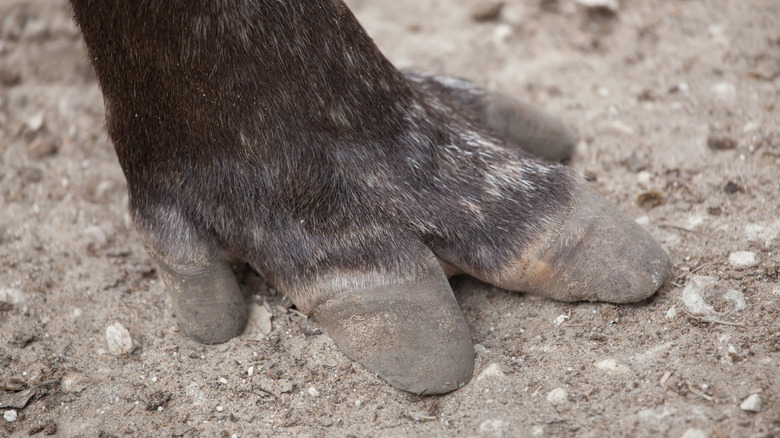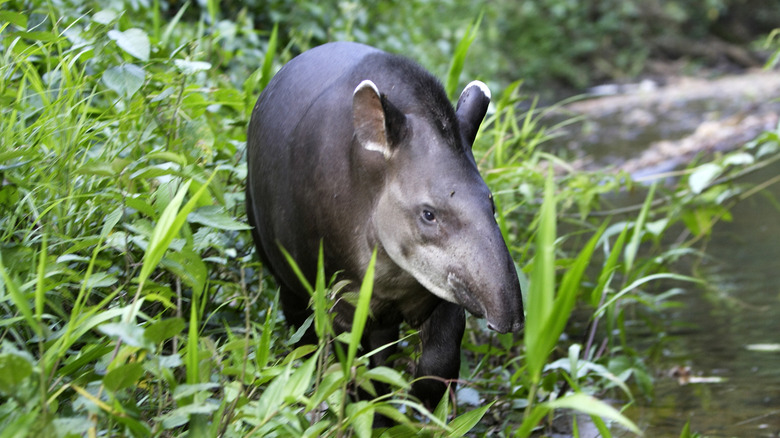South America's Largest Mammal Thought Extinct Was Spotted In A Protected Zone
Nature never ceases to amaze in its perseverance despite many challenges, such as climate change, pollution, and invasive species. Stories like the recent heartwarming discovery researchers made about the Yellowstone bison or the unique one-in-a-million animal spotted in Texas are just a few examples of the remarkable persistence of nature and the animal kingdom. Yet, at the start of 2025, the discovery of the once-thought-extinct giant mammal, the South American tapir (Tapirus terrestris) in the Costa Verde region, stands out as one of the most exciting of the year.
The last recorded sighting of the South American tapir in the region was at the Serra dos Órgãos National Park in Rio de Janeiro, Brazil, in 1914, before they were pushed out of the area due to urban development. The South American tapir is listed as vulnerable on the International Union for Conservation of Nature Red List, but has been considered extinct in the region after a 100-year hiatus. However, a recent sighting of not just one, but a mother with two offspring, was made in the 38,000-hectare Cunhambebe State Park, established in 2008 to help protect vulnerable species.
@dailymailau More than a century has passed since the last sighting of a South American tapir, a species previously believed to be extinct, until a recent, surprise sighting was reported in Brazil. Hidden cameras placed deep within the dense growth of the Atlantic Forest in Cunhambebe State Park revealed a shocking scene: not one, not two, but three South American tapirs. The rhinoceros relatives were believed to have gone extinct before the unanticipated sighting in January. #animal #crazy #animalsoftiktok #wildanimals #cool #dailymail #fyp #australia #rhinoceros #brazil #funnyanimals
Caught on a trail camera set up by Rio de Janeiro's State Institute of Environment (INEA) in February of 2025, the organization collected over a hundred photos and a video of the adorable trio marking their return to the region. An INEA representative commented on the discovery with Diario AS, "This challenge reflects the importance of protected areas and conservation efforts in the recovery of emblematic species." To understand the importance of the young family of tapirs, it's good to know how essential the conservation of the tapir is for the region.
The South American tapir is an ancient animal important to the region
Found in South America, the large, lowland tapir may seem almost alien to those who have not seen one before. Due to its prehensile snout, the large mammal appears to be an amalgamation of other familiar animals, like pigs or anteaters. Despite this appearance, the tapir is more closely related to rhinos and horses. Casting an impressive figure, the tapir is the largest land mammal in South America, weighing between 300 and 700 pounds.
Yet it is not just looks that have made the tapir one of the most admired mammals of the region; the tapir's lineage dates back to the Eocene era, 56 to 33.9 million years ago. The large land mammal has outlived countless others, including the dire wolf, and the largest wolf of all time before that. This shows remarkable perseverance in the face of numerous challenges, including the tapir's demanding lifecycle, as mothers have one baby per pregnancy with a gestation period of 13 to 14 months.
The tapir is a living fossil, and its global population, which includes four species found in South America and Southeast Asia, presents an opportunity for conservationists and animal enthusiasts to observe an ancient species. Although the tapir still faces global challenges, the recent emergence of a new family in the Costa Verde region of South America after a hundred-year absence is important in the continued conservation of the one-of-a-kind animal.

